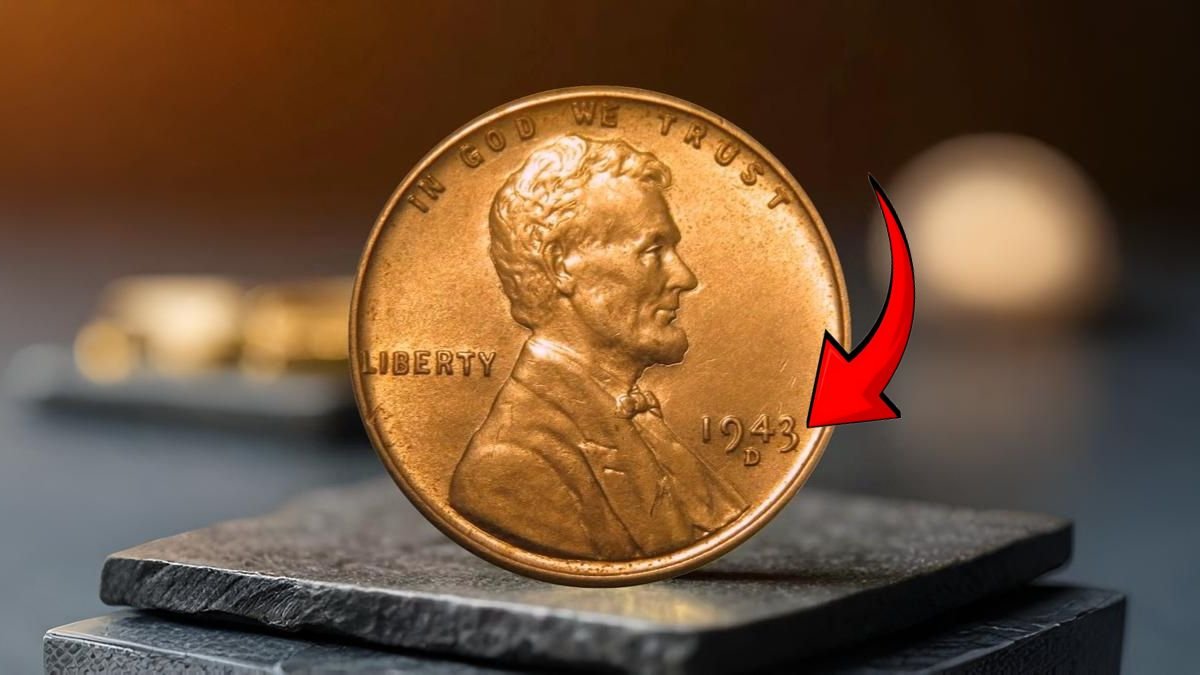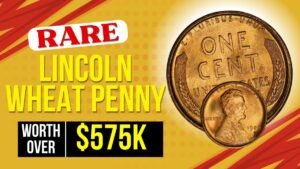It is surprising to know that a small coin, which we often keep in our wallet or pocket without noticing, can sometimes open such layers of history, which connect us to our past. The Lincoln Wheat Penny is one such coin, which looks common, but its story is extraordinary. It is not just a one-paisa coin but a living document of American history, culture and heritage.
Recently, a rare version of this coin was valued at $1.7 million. This is not a matter of lottery or luck, but the value of the historical heritage that is hidden in this seemingly ordinary coin. This story explains to us how extraordinary importance is hidden even in ordinary things—we just need the vision to see them.
This coin is connected to the roots of American history.
The Lincoln Wheat Penny was started in 1909, and its purpose was to celebrate the 100th anniversary of the birth of Abraham Lincoln, the 16th President of America. This was the first time that the image of a real historical person was depicted on US currency. Before this, coins only had pictures of fictional symbols such as ‘Lady Liberty.’
The design of this coin was prepared by the famous sculptor Victor David Brenner. Two wheat ears were engraved on the back of the coin, which are considered symbols of prosperity and agricultural society. It was also named ‘Wheat Penny’ because of these ears. This design not only pays tribute to Lincoln but also reflects America’s values of self-reliance and hard work.
This coin was widely circulated in America from 1909 to 1958. After this it was replaced by the ‘Lincoln Memorial’ design. But even after this, millions of wheat penny coins continued to circulate in the hands of the public, and even today many times these coins can be found in people’s pockets or some corner of the cupboard.
What makes some pennies so rare?
Not all wheat penny coins are rare. But some of these special editions are so valuable that they are in great demand among collectors around the world. These rare coins command high prices due to minting errors, limited production or specific historical reasons.
A prime example is the 1943 penny, which was mistakenly printed on bronze instead of steel. At that time, there was a shortage of copper due to World War I and the government used steel, but some coins were made of the old material. This mistake makes these coins extremely rare today.
Apart from this, some coins have double-die errors, off-center strikes or different mint marks. All these are often caused by technical flaws in the machine or human error of mint employees. But these mistakes make them collectible and valuable. When a Lincoln Wheat Penny recently went viral for $1.7 million, it wasn’t just the price that was the source of the coin’s value, but the story of the legacy, mistake, and historical uniqueness that went with it.
Are these coins still in circulation today? Yes, they probably are!
It may be surprising to learn that there are many Wheat Penny coins still circulating around today. Because these coins look similar to modern Lincoln cents and are made of copper, they often go unrecognized by the general public. Often these coins end up in the corner of an old piggy bank, end up in a donation box, or are sold unrecognized at a garage sale.
Many Americans use these coins every day, spending them like normal money, without realizing that they are carrying forward a historical legacy with their own hands.
That’s the thrill that makes coin collecting a wonderful hobby. Every shoplifting, every search of an old box can turn out to be a small treasure. While every coin may not be worth millions, every discovery is a historical milestone and a moment of enlightenment.
One Coin, Many Lessons—A Learning Aid for Children and Students
Coins like the Lincoln Wheat Penny are not just collectibles; they are also tools for education and awareness. Teachers use these coins to teach children about American history, the Great Depression, the World Wars, and industrial change.
Even the change from wheat to memorial design shows how national values and memories change over time.
Showcasing old coins in schools makes it easier for children to understand that history is not just confined to books but also hidden in the coin that we carry around in our pockets. Such coins are prominently displayed in museums and historical organizations so that people can see how even seemingly common objects tell deep stories.
Post not found.
A quiet reminder: What we overlook
The $1.7 million edition of the Lincoln Wheat Penny is not a lottery ticket; we sift through piles of coins hoping to win. It is a silent sign that history is quietly touching us all around us—in our pockets, our wallets, and our habits.
Coins like these teach us how small details can hold big meanings. They prompt us to stop, to think, to ask questions—why was Lincoln chosen? In which years were coins different? How did wartime change the design? These questions are not just about coins, but they give us a glimpse into America’s social, political and economic transformation.
Final Thoughts: A Coin, a Legacy, an Opportunity
The true value of the Lincoln Wheat Penny, which has been valued at $1.7 million, is not just in its rarity. It is a symbol of a time, a story and a national spirit. It is a witness to all the changes America has seen over the past century—from independence to modernity.
And as long as these coins keep circulating, history will live on among us. The next time you find a penny in your purse, take a closer look—who knows, it might not be just a penny but a doorway to an untold story.
FAQs
Q. What is a Lincoln Wheat Penny?
A. It’s a U.S. penny first minted in 1909 featuring Abraham Lincoln and wheat stalks on the back, used until 1958.
Q. Why is one Lincoln Wheat Penny worth $1.7 million?
A. Due to rare minting errors or unique versions, like the 1943 bronze penny, some are extremely valuable to collectors.
Q. Are Wheat Pennies still in circulation?
A. Yes, some can still be found in loose change, especially older copper ones from before 1959.
Q. How can I identify a valuable Wheat Penny?
A. Look for errors (like double dies), unusual mint marks, or rare years like 1909-S VDB or 1943 bronze versions.
Q. Where can I check a Wheat Penny’s value?
A. You can consult a coin dealer, a numismatic guidebook, or use trusted online resources like PCGS or NGC.

